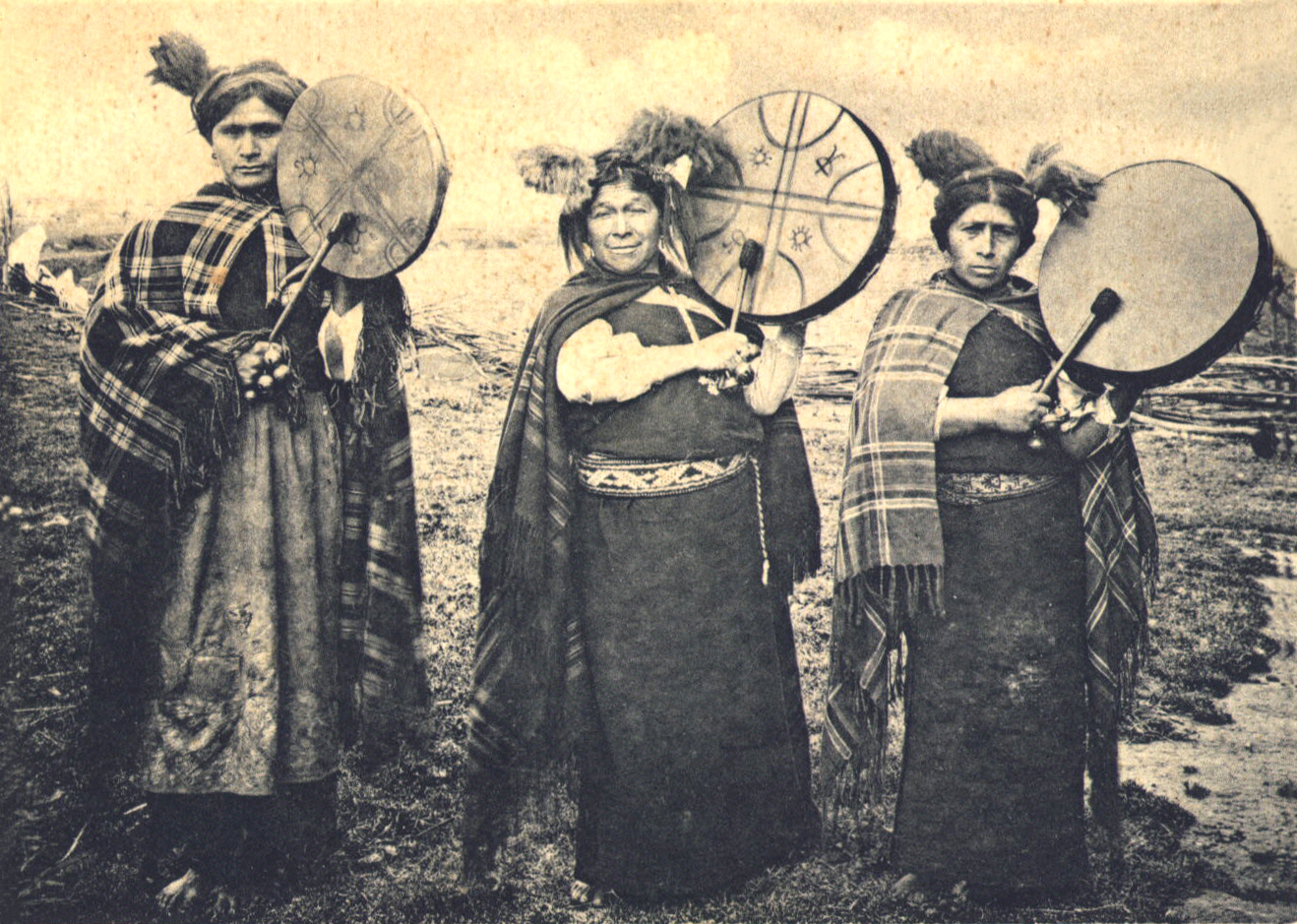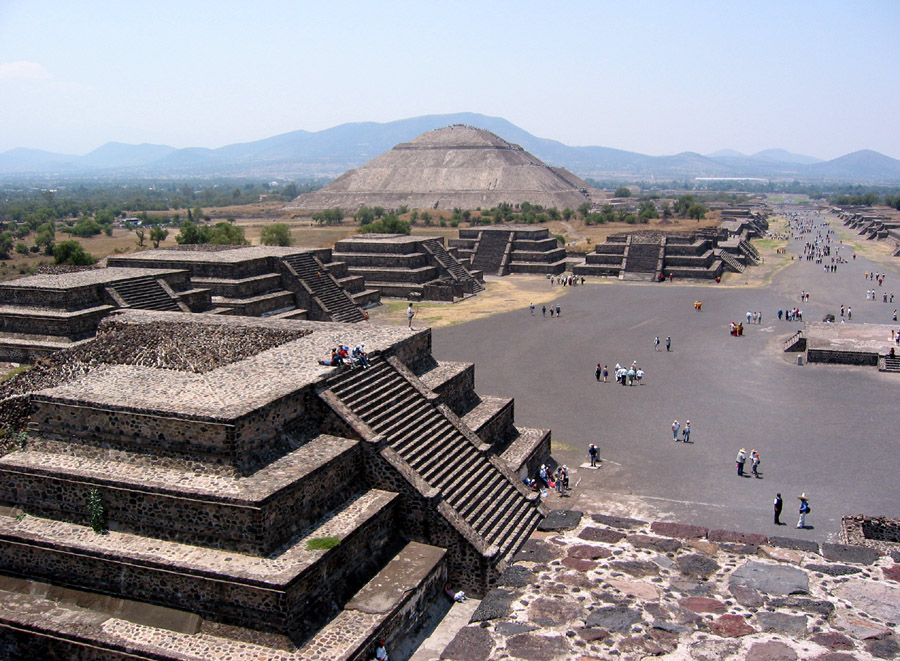|
Mapuche Medicine
Mapuche medicine is the system of medical treatment historically used by the Mapuche people of southern Chile. It is essentially magical-religious in nature, believing disease to be caused by supernatural factors such as spells and curable by treatments based on rituals, thermal waters and herbs. Knowledge of medicinal herbs is one of the best-known elements of Mapuche medicine and is still used today. Zúñiga S. Algunos aspectos de las costumbres y reseña del cuidado del niño entre los antiguos araucanos. Ars Médica. Revista de Estudios Médicos Humanísticos 2001; 141-150, retrieved December 5, 2013 One of the most striking aspects of historical Mapuche medicine was the use of surgery as a treatment, which was developed to treat wounds and traumas suffered in the frequent battles between tribes. Fractures and dislocations of bones were treated by immobilising and covering the limbs with pastes and ointments made of medicinal herbs.Cruz-Coke, Ricardo. Historia de la medicina ch ... [...More Info...] [...Related Items...] OR: [Wikipedia] [Google] [Baidu] |
Mapuche People
The Mapuche ( (Mapuche & Spanish: )) are a group of indigenous inhabitants of south-central Chile and southwestern Argentina, including parts of Patagonia. The collective term refers to a wide-ranging ethnicity composed of various groups who shared a common social, religious, and economic structure, as well as a common linguistic heritage as Mapudungun speakers. Their habitat once extended from Aconcagua Valley to Chiloé Archipelago and later spread eastward to Puelmapu, a land comprising part of the Argentine pampa and Patagonia. Today the collective group makes up over 80% of the indigenous peoples in Chile, and about 9% of the total Chilean population. The Mapuche are particularly concentrated in the Araucanía region. Many have migrated from rural areas to the cities of Santiago and Buenos Aires for economic opportunities. The Mapuche traditional economy is based on agriculture; their traditional social organization consists of extended families, under the direction of a ... [...More Info...] [...Related Items...] OR: [Wikipedia] [Google] [Baidu] |
Pre-Columbian Cultures
This list of pre-Columbian cultures includes those civilizations and cultures of the Americas which flourished prior to the European colonization of the Americas. Cultural characteristics Many pre-Columbian civilizations established permanent or urban settlements, agriculture, and complex societal hierarchies. In North America, indigenous cultures in the Lower Mississippi Valley during the Middle Archaic period built complexes of multiple mounds, with several in Louisiana dated to 5600–5000 BP (3700 BC–3100 BC). Watson Brake is considered the oldest, multiple mound complex in the Americas, as it has been dated to 3500 BC. It and other Middle Archaic sites were built by pre-ceramic, hunter-gatherer societies. They preceded the better known Poverty Point culture and its elaborate complex by nearly 2,000 years. [...More Info...] [...Related Items...] OR: [Wikipedia] [Google] [Baidu] |
Indigenous Peoples In Chile
Indigenous peoples in Chile or Native Chileans form about 10% of the total population of Chile. According to the 2012 census, 2,000,000 people declare having indigenous origins. Most Chileans are of partially indigenous descent, and the term and its legal ramifications are typically reserved to those who self-identify with and are accepted within one or more indigenous groups. The Mapuche, with their traditional lands in south-central Chile, account for approximately 85% of this number. There are also small populations of Aymara, Quechua, Atacameño, Kolla, Diaguita, Yaghan, Rapa Nui and Kawaskhar in other parts of the country,Report on Human Rights Practices 2006: Chile |
Indigenous Peoples In Argentina
Argentina has 35 indigenous groups (often referred to as Argentine Amerindians or Native Argentines) according to the Complementary Survey of the Indigenous Peoples of 2004, the Argentine government's first attempt in nearly 100 years to recognize and classify the population according to ethnicity. In the survey, based on self-identification or self-ascription, around 600,000 Argentines declared to be Amerindian or first-generation descendants of Amerindians, that is, 1.49% of the population. The most populous indigenous groups were the Aonikenk, Kolla, Qom, Wichí, Diaguita, Mocoví, Huarpe peoples, Mapuche and Guarani In the , 955,032 Argentines declared to be Amerindian or first-generation descendants of Amerindians, that is, 2.38% of the population. Many Argentines also identify as having at least one indigenous ancestor; a genetic study conducted by the University of Buenos Aires in 2011 showed that more than 56% of the 320 Argentines sampled were shown to have at least on ... [...More Info...] [...Related Items...] OR: [Wikipedia] [Google] [Baidu] |
Society Of Chile
A society is a group of individuals involved in persistent social interaction, or a large social group sharing the same spatial or social territory, typically subject to the same political authority and dominant cultural expectations. Societies are characterized by patterns of relationships (social relations) between individuals who share a distinctive culture and institutions; a given society may be described as the sum total of such relationships among its constituent of members. In the social sciences, a larger society often exhibits stratification or dominance patterns in subgroups. Societies construct patterns of behavior by deeming certain actions or concepts as acceptable or unacceptable. These patterns of behavior within a given society are known as societal norms. Societies, and their norms, undergo gradual and perpetual changes. Insofar as it is collaborative, a society can enable its members to benefit in ways that would otherwise be difficult on an individua ... [...More Info...] [...Related Items...] OR: [Wikipedia] [Google] [Baidu] |
Indigenous Peoples Of The Southern Cone
*
*
{{disambiguation ...
Indigenous may refer to: *Indigenous peoples *Indigenous (ecology), presence in a region as the result of only natural processes, with no human intervention *Indigenous (band), an American blues-rock band *Indigenous (horse), a Hong Kong racehorse * ''Indigenous'' (film), Australian, 2016 See also *Disappeared indigenous women *Indigenous Australians *Indigenous language *Indigenous religion *Indigenous peoples in Canada *Native (other) Native may refer to: People * Jus soli, citizenship by right of birth * Indigenous peoples, peoples with a set of specific rights based on their historical ties to a particular territory ** Native Americans (other) In arts and enterta ... [...More Info...] [...Related Items...] OR: [Wikipedia] [Google] [Baidu] |
Mapuche Culture
The Mapuche ( (Mapuche & Spanish: )) are a group of indigenous inhabitants of south-central Chile and southwestern Argentina, including parts of Patagonia. The collective term refers to a wide-ranging ethnicity composed of various groups who shared a common social, religious, and economic structure, as well as a common linguistic heritage as Mapudungun speakers. Their habitat once extended from Aconcagua Valley to Chiloé Archipelago and later spread eastward to Puelmapu, a land comprising part of the Argentine pampa and Patagonia. Today the collective group makes up over 80% of the indigenous peoples in Chile, and about 9% of the total Chilean population. The Mapuche are particularly concentrated in the Araucanía region. Many have migrated from rural areas to the cities of Santiago and Buenos Aires for economic opportunities. The Mapuche traditional economy is based on agriculture; their traditional social organization consists of extended families, under the direction of a ... [...More Info...] [...Related Items...] OR: [Wikipedia] [Google] [Baidu] |
Drimys Winteri
''Drimys winteri'', the winter's bark or canelo, is a slender tree in the family Winteraceae, growing up to tall. It is native to the Magellanic and Valdivian temperate rain forests of Chile and Argentina, where it is a dominant tree in the coastal evergreen forests. It is found below between latitude 32° south and Cape Horn at latitude 56°. In its southernmost natural range it can tolerate temperatures down to . The plant is renowned for its phenotypic plasticity being able to grow in different sites from "extreme arid zones to wetlands along Chile". The tree does also grow in places with various types and degrees of competition from other plants. The leaves are lanceolate, glossy green above, whitish below and can measure up to . The flowers are white with a yellow center, and consist of a great number of petals and stamens. The fruit is a bluish berry. The height–diameter relation of ''D. winteri'' varies greatly. There is for example more spread in ''D. winteri'' he ... [...More Info...] [...Related Items...] OR: [Wikipedia] [Google] [Baidu] |
Lauraceae
Lauraceae, or the laurels, is a plant family that includes the true laurel and its closest relatives. This family comprises about 2850 known species in about 45 genera worldwide (Christenhusz & Byng 2016 ). They are dicotyledons, and occur mainly in warm temperate and tropical regions, especially Southeast Asia and South America. Many are aromatic evergreen trees or shrubs, but some, such as ''Sassafras'', are deciduous, or include both deciduous and evergreen trees and shrubs, especially in tropical and temperate climates. The genus ''Cassytha'' is unique in the Lauraceae in that its members are parasitic vines. Most laurels are highly-poisonous. Overview The family has a worldwide distribution in tropical and warm climates. The Lauraceae are important components of tropical forests ranging from low-lying to montane. In several forested regions, Lauraceae are among the top five families in terms of the number of species present. The Lauraceae give their name to habitats know ... [...More Info...] [...Related Items...] OR: [Wikipedia] [Google] [Baidu] |
Hot Spring
A hot spring, hydrothermal spring, or geothermal spring is a spring produced by the emergence of geothermally heated groundwater onto the surface of the Earth. The groundwater is heated either by shallow bodies of magma (molten rock) or by circulation through faults to hot rock deep in the Earth's crust. In either case, the ultimate source of the heat is radioactive decay of naturally occurring radioactive elements in the Earth's mantle, the layer beneath the crust. Hot spring water often contains large amounts of dissolved minerals. The chemistry of hot springs ranges from acid sulfate springs with a pH as low as 0.8, to alkaline chloride springs saturated with silica, to bicarbonate springs saturated with carbon dioxide and carbonate minerals. Some springs also contain abundant dissolved iron. The minerals brought to the surface in hot springs often feed communities of extremophiles, microorganisms adapted to extreme conditions, and it is possible that life on Earth had its ... [...More Info...] [...Related Items...] OR: [Wikipedia] [Google] [Baidu] |






.jpg)